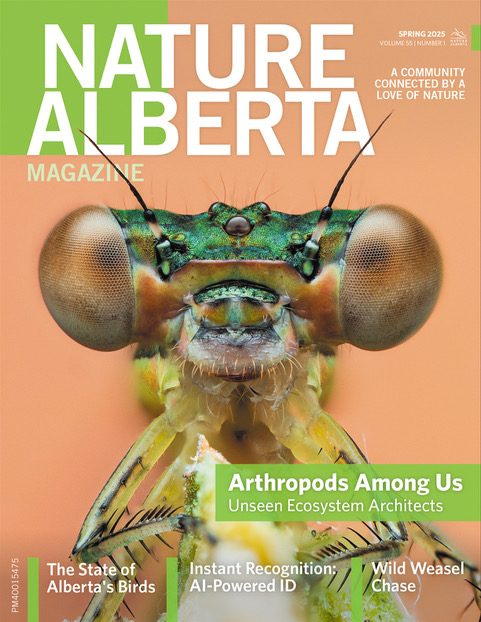Sharing Space: Bear-y Good Neighbours
16 April 2025

By LOREENA NIEUWENHOUT and STEPHANIE WEIZENBACH
Bears are on the minds of many this time of year, as these iconic mammals emerge from their winter dens and roam the valleys of Alberta’s mountain ranges and forage in northern forests.
There are only two species of bear found in the province: black bears and grizzly bears. Human-wildlife conflict management has been a hot topic since the 2024 amendment to the Wildlife Act allowed threatened grizzly bears to be hunted as a means to address conflict. There are numerous ways you can help reduce conflicts with bears without hunting them.
The Alberta Grizzly Bear Recovery Plan prioritizes reducing human-caused mortality to support the recovery of the species; to do so, we must reduce conflicts with bears. The biggest way individuals can make a difference is by reducing food attractants. Bears have an incredible sense of smell and are attracted to human food and garbage from great distances. While camping in bear country, make sure to keep your food secure inside a vehicle or bear locker while not in use, and tidy up your cooking area promptly, never leaving it unattended. Always dispose of garbage in bear-proof bins. People living in bear country have to be extra diligent about attractants: guarding livestock, feeding pets indoors, storing feed in bear-proof containers or buildings, and reconsidering placing fruit trees and bird feeders in proximity to your home. Understanding bear behaviour helps us recognize when we might be unintentionally attracting them to our yards; once a bear discovers a new food source, they will continue to return to that place. Eliminating attractants will reduce the frequency of bears approaching human spaces.
Encounters can also occur inadvertently as we participate in outdoor activities in bear country. There are a number of ways you can reduce the likelihood of an encounter or prevent an encounter from becoming a conflict. Firstly, hiking in groups of three or more helps prevent a bear attack when encountered. Secondly, it is always important to stay aware of your surroundings while hiking. Keep an eye on the trail. If you see a steaming pile of bear scat or a big, fresh bear track in the mud, turn around, head back to the trailhead, and warn all fellow hikers you pass. Thirdly, it is important to make noise as you hike to avoid surprising any wild animals. And last but certainly not least, always carry bear spray when hiking in bear country. Make sure you can reach it easily and know how to use it properly. If you do encounter a bear, be sure to stick together with your hiking companions in a tight group, do not run, and when it is safe to do so, slowly make your way back out the way you came. When we enjoy the great outdoors, we’re the ones entering the bears’ space, and it’s up to us to be mindful and respectful of that.
For more information on how you can reduce human-bear conflicts, visit alberta.ca/alberta-bearsmart.
Loreena Nieuwenhout is Nature Alberta’s Nature Kids Program Assistant. Stephanie Weizenbach is Nature Alberta’s Executive Director.
Read the Original Article for this Post
For a richer reading experience, view this article in the professionally designed online magazine with all images and graphs in place.
This article originally ran in the Spring 2025 issue of Nature Alberta Magazine (Vol. 55 | No. 1).


